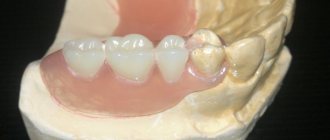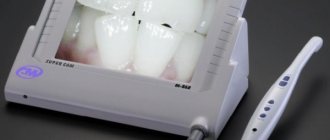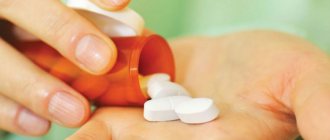Antibiotics are substances of biological or semi-synthetic origin. They are used in medical practice to combat pathogenic microbes and viruses. Before the advent of these medications, typhoid fever, dysentery, pneumonia, and tuberculosis had the status of incurable diseases. Today, treatment of infectious diseases is possible with the use of 1-6 generations of antibiotics.
At this moment, the pharmacological industry produces more than 2000 varieties of drugs of this type. Doctors have described the effects of about 600 positions, and about 120-160 drugs are used in medical practice.
Important! For any disease, it is recommended to take antibiotics after consulting a doctor. Otherwise, antibiotic resistance may develop (decreased sensitivity of pathogenic microorganisms to antibacterial agents).
Pharmacological properties
Ciprfloxacin solution is an antimicrobial agent with a broad spectrum of action. The antibiotic included in its composition is a fluoroquinolone derivative. Its action is based on the mechanism of suppression of bacterial DNA gyrase and disruption of DNA synthesis, affecting the growth and division of bacterial microflora, which causes the rapid death of bacterial cells.
The use of ciprofloxacin does not cause resistance to other actibiotics: aminoglycosides, penicillins, tetracyclines, cephalosporins, etc. Most gram-positive and gram-negative aerobic bacteria are sensitive to ciprofloxacin. Resistant to the drug: Pseudomonas cepacia, Bacteroides fragilis, Pseudomonas maltophilia, Clostridium difficile Nocardia asteroides, Ureaplasma urealyticum. It is ineffective against Treponema pallidum.
Release form
Tsiprolet is produced by many pharmaceutical companies, as it is one of the most popular antibacterial agents. It is produced in the following dosage forms:
- infusion solution - in polyethylene bottles of 100 ml, where the content of ciprofloxacin does not exceed 2 mg per ml;
- tablets - each containing 250 mg or 500 mg of the main active ingredient, they are packaged in blisters of 10 pieces;
- eye drops - sold in bottles with a dropper of 5-10 ml, which contain 3 mg of ciprofloxacin per 1 ml of solution.
According to the instructions for use of Tsiprolet 500, these tablets contain the maximum dose of the active substance. They are used to treat severe bacterial lesions in advanced infections.
Directions for use and doses
In ophthalmic practice, for mild to moderately severe eye infections, it is prescribed to instill 1 or 2 drops of Ciprofloxacin solution conjunctivally into the affected eye every 4 hours.
Cases of severe infection require instillation of 2 drops every hour. As the condition improves, the frequency of instillations is reduced.
When treating a bacterial corneal ulcer, it is recommended to apply a solution of Ciprfloxacin: on the first day, 1 drop every 15 minutes, for six hours, then, in the same dosage, every 30 minutes. On day 2, a drop of the drug is added every hour. Starting from day 3, a drop of Ciprfloxacin solution is added to the affected eye every 4 hours. The duration of such therapy is 14 days.
New generation antibacterial agents
The difference between the latest generations of antibiotics and their earlier versions is a more advanced formula of the active substance. Active components specifically eliminate only pathological reactions in the cell. For example, new generation intestinal antibiotics do not disrupt the microflora of the gastrointestinal tract. At the same time, they fight an entire “army” of infectious agents.
The newest antibacterial drugs are divided into five groups:
- Tetracycline – tetracycline.
- Aminoglycosides – streptomycin.
- Penicillin series - amoxicillin and others.
- Amphenicols – chloramphenicol.
- Carbapenem group – meropenem, imipenem, invaz.
Let's consider several well-known antimicrobial agents of imported and Russian production.
Amoxicillin is an imported antimicrobial drug from the penicillin group. Used in medical practice to treat bacterial infections. Effective for intestinal infections, sinusitis, sore throat, Lyme disease, dysentery, sepsis.
Avelox is the latest generation of medications from the group of fluoroquinolones. It has a strong effect on bacterial and atypical pathogens. Does not harm the kidneys and gastrointestinal tract. Used for acute and chronic diseases.
Cephalosporins are third generation antibiotics. This group includes Ceftibuten, Ceftriaxone and others. Used to treat pyelonephritis and pneumonia. In general, these are safe products with few side effects. However, they should be taken only after consulting a doctor. There are many medications, but a specialist will recommend which one to choose.
Doriprex is an imported antimicrobial drug of synthetic origin. Showed good results in the treatment of pneumonia, advanced intra-abdominal infections, pyelonephritis.
Invaz is an antibacterial agent from the carbapenem group. Available in ampoules for parenteral administration. Shows a rapid effect in the treatment of bacterial disorders of the skin, soft tissues, urinary tract infections, pneumonia, septicemia.
Augmetin is a third generation semi-synthetic penicillin with the addition of enhancing inhibitors. Pediatricians recognize it as the best comprehensive medication for the treatment of childhood sinusitis, bronchitis, tonsillitis and other respiratory tract infections.
Cefamandole is a Russian-made antibacterial agent. Belongs to the group of third generation cephalosporins. Used to treat intestinal infections, pathogens of genital infections. As an antimicrobial agent with a wide range of effects, it is used for colds.
special instructions
Ciprofloxacin eye drop solution is not intended for injection.
When using this drug in combination with other ophthalmic solutions, the interval between their applications should be up to 5 minutes.
If any signs of hypersensitivity appear, use of the solution should be discontinued.
During treatment with Ciprofloxacin solution, soft contact lenses are not recommended. Or they must be removed before each instillation.
Store Ciprofloxacin solution at room temperature, in a dark place. Keep away from children.
The shelf life of the bottle before opening is 3 years. After opening - 4 weeks.
Ciprofloxacin
When taken orally, ciprofloxacin is quickly and fairly completely absorbed from the gastrointestinal tract (mainly in the duodenum and jejunum). Eating slows down absorption, but does not change the maximum concentration (Cmax) and bioavailability. The bioavailability of the drug is 50-85%.
The time to reach maximum concentration (TCmax) is 60-90 minutes, Cmax linearly depends on the dose taken and is about 2.4 and 5.4 μg/ml at doses of 500 and 1000 mg, respectively. 12 hours after oral administration of 500 mg, the concentration of the drug in plasma decreases to 0.2 mcg/ml.
Ciprofloxacin is well distributed in tissues and body fluids. High concentrations of the drug are achieved in bile, lungs, kidneys, liver, gall bladder, uterus, seminal fluid, prostate tissue, tonsils, endometrium, fallopian tubes and ovaries. The concentration in tissues is 2-12 times higher than in plasma. Ciprofloxacin also penetrates well into bones, ocular fluid, bronchial secretions, saliva, skin, muscles, pleura, peritoneum, lymph, and through the placenta. The drug penetrates into the cerebrospinal fluid in small quantities, where its concentration in the absence of inflammation of the meninges is 6-10% of that in the blood serum, and in the case of inflammation - 14-37%. The concentration of ciprofloxacin in blood neutrophils is 2-7 times higher than in blood serum.
The volume of distribution in the body is 2-3.5 l/kg.
The degree of binding of ciprofloxacin to plasma proteins is 20-40%.
Metabolized in the liver (15-30%) with the formation of low-active metabolites (diethylciprofloxacin, sulfociprofloxacin, oxociprofloxacin, formylciprofloxacin).
The half-life (T1/2) is about 4 hours, in case of chronic renal failure - up to 12 hours. It is excreted mainly by the kidneys by tubular filtration and tubular secretion in unchanged form (40-50%) and in the form of metabolites (15%), the rest part - the gastrointestinal tract. A small amount is excreted in breast milk.
Renal clearance - 3-5 ml/min/kg; total clearance - 8-10 ml/min/kg.
In chronic renal failure (creatinine clearance above 20 ml/min), the percentage of ciprofloxacin excreted through the kidneys decreases, but accumulation in the body does not occur due to a compensatory increase in ciprofloxacin metabolism and excretion through the gastrointestinal tract.
Mechanism of action of the drug
Tsiprolet belongs to the group of fluoroquinolones and is an antibacterial drug with a wide range of effects. Its main active ingredient is ciprofloxacin. This chemical compound has the ability to penetrate the DNA structure of the cells that cause the infection, thereby disrupting the vital functions of bacteria, their ability to subsequently reproduce and develop. The result of this influence is the death of harmful microorganisms.
Tsiprolet tablets have a complex effect, effectively destroying microbes that are both at the reproduction stage and in the resting phase. The spectrum of negative effects of this medicine extends to almost all types of gram-positive and gram-negative bacteria, most of the anaerobic pathogens. The instructions for use of Tsiprolet state that its main active component actively eliminates bacterial microflora that are resistant to other antibiotics, for example, the nitrofuran or sulfonamide series. Resistance of microbes to this medicine appears only after a long period of time.
Special information
Tsiprolet is not effective against streptococci, so it is not prescribed for the treatment of pathologies caused by bacteria of this group. In case of severe infection by anaerobes and staphylococcal microflora, it is better to take the medication in combination with other antibiotics, which will help enhance the therapeutic effect of ciprofloxacin.
The instructions for Tsiprolet tablets indicate that this drug can have an effect on the patient’s body, changing the ability to concentrate. Therefore, it should not be used by transport drivers and persons servicing complex mechanisms and machines. It is unacceptable to use the medication in combination with alcohol. Tsiprolet is available only with a doctor's prescription.
Dosage and methods of application
The antibiotic Tsiprolet is prescribed by a doctor after examining the patient. The dose of the drug is selected based on the type of infection, the severity of the disease and the patient’s condition. The dosage regimen is also influenced by the functional ability of the urinary organs and the person’s body weight (when used in adolescence and childhood).
For the most severe cases of infection and when it is impossible to take the medication in tablet form, Tsiprolet is prescribed in the form of infusion solutions. Then the intravenous infusions of the drug are gradually stopped, and the patient switches to internal administration of the medication. The tablets do not need to be chewed; they simply need to be swallowed whole and washed down with a small amount of water. Take Tsiprolet, regardless of food intake, 500-750 mg twice a day.
The duration of therapy depends on the severity of the pathology and can vary from 3 to 21 days. Usually the doctor prescribes the use of this antibiotic for a period of 7 to 14 days.
Indications
Ciprofan tablets - what do they help with? This antibiotic is used for the treatment of complicated or uncomplicated bacterial infections that are caused by strains of microorganisms sensitive to ciprofloxacin. The remedy is indicated for the following diseases:
- urinary tract infections;
- bacterial lesions of the gastrointestinal tract;
- sepsis;
- pathologies of ENT organs, especially in case of infection with staphylococcal microflora and gram-negative bacteria, including the Pseudomonas type;
- peritonitis;
- infectious lesions of the respiratory system (for example, pneumonia), if they are caused by Enterobacter, Staphylococcus, Klebsiella, Haemophilus influenzae, Legionella or microbes of the Branhamella, Pseudomonas species;
- inflammatory infectious diseases of the genital organs in men and women (prostatitis, adnexitis);
- infections of the musculoskeletal system and skin;
- some sexually transmitted diseases (gonorrhea);
- bacterial lesions of the eyelid and conjunctiva of the eyes;
- therapy and prevention of infections in patients with low immunity (for example, with neutropenia or after treatment with immunosuppressive drugs).
Adverse reactions and contraindications for use
Tsiprolet very rarely causes allergic reactions. After treatment with this medication, the following side effects most often develop: dyspeptic disorders, nausea and vomiting, skin itching and rash, shortness of breath.
The use of this medicine is contraindicated in the following cases:
- during pregnancy;
- if you are allergic to ciprofloxacin and quinolone drugs;
- in adolescence and childhood;
- during lactation.
Tsiprolet is prescribed with caution to elderly patients. The medication is used only in special cases for people suffering from epilepsy, vascular pathologies, and organic diseases of the brain. Such patients are more likely to experience side effects due to taking the drug, so this antibiotic is indicated for them only in life-threatening situations. In case of allergic reactions and other complaints (for example, joint pain, myalgia), use of the medicine should be discontinued.










